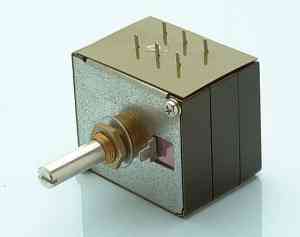joe3p said:
However the series aspect of multiple resitors has should be considered. Number of resitors x number of leads - solder...etc
Hi joe3rp,
Thanks for pointing out the Goldpoint site! It was very informative. Could you elaborate more on the 'problems' you stated above with series atten. w/out connecting it as a shunt type, if you don't mind? The Goldpoint site does not expound on this. Thanks again.
From Goldpoint's site:
"All Goldpoint stepped attenuators improve sound quality and provide better channel-to-channel signal level tracking, compared to potentiometers.
I generally recommend the reliable Mini-V (series type) attenuators. They serve as easy, direct potentiometer replacements/upgrades and yield 95% (or more) of the advantages of using a stepped attenuator: better sound quality and improved channel-to-channel signal level matching.
Theoretically, Mini-L ladder attenuators will sound the best, although reports from users generally state that Mini-H shunt attenuators sound just like ladders. But compared to our Mini-V series type attenuators, you may need to have really good equipment, including your loud speakers, and a good listening room to perceive and appreciate the sonic differences. In some systems, using a series type attenuator yields all the sonic improvement a listener cares to (or is able to) discern.
Additionally, both ladder and shunt attenuators sometimes present a different kind of problem, compared to series type attenuators. They sometimes create popping or clicking sounds while switching them from one level setting to the another. The amount of popping or clicking depends upon the actual circuit the attenuator is installed into, or upon the other equipment in the system.
Popping or clicking sounds when using ladders is usually due to "DC offset" present at the volume control in the system. Fixes for this include capacitively coupling the output of the ladder attenuator, or adding a resistor to ground at the output of the ladder attenuator. (Note: Some systems with ladder attenuators installed have no popping or clicking problems.)"




